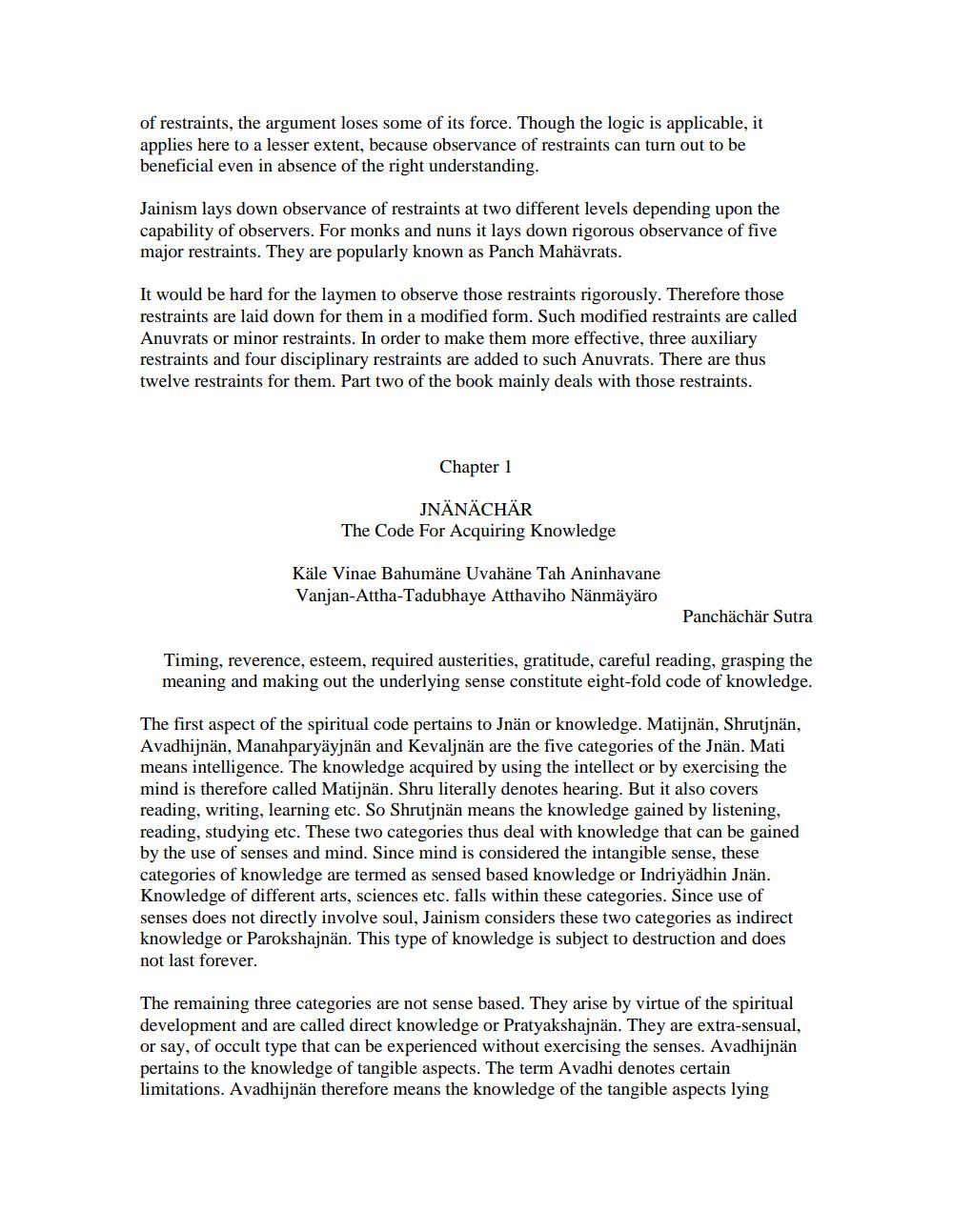________________
of restraints, the argument loses some of its force. Though the logic is applicable, it applies here to a lesser extent, because observance of restraints can turn out to be beneficial even in absence of the right understanding.
Jainism lays down observance of restraints at two different levels depending upon the capability of observers. For monks and nuns it lays down rigorous observance of five major restraints. They are popularly known as Panch Mahävrats.
It would be hard for the laymen to observe those restraints rigorously. Therefore those restraints are laid down for them in a modified form. Such modified restraints are called Anuvrats or minor restraints. In order to make them more effective, three auxiliary restraints and four disciplinary restraints are added to such Anuvrats. There are thus twelve restraints for them. Part two of the book mainly deals with those restraints.
Chapter 1
JNÄNÄCHÄR The Code For Acquiring Knowledge
Käle Vinae Bahumäne Uvahäne Tah Aninhavane Vanjan-Attha-Tadubhaye Atthaviho Nänmäyäro
Panchächär Sutra
Timing, reverence, esteem, required austerities, gratitude, careful reading, grasping the meaning and making out the underlying sense constitute eight-fold code of knowledge.
The first aspect of the spiritual code pertains to Jnän or knowledge. Matijnän, Shrutjnän, Avadhijnän, Manahparyäyjnän and Kevaljnän are the five categories of the Jnän. Mati means intelligence. The knowledge acquired by using the intellect or by exercising the mind is therefore called Matijnän. Shru literally denotes hearing. But it also covers reading, writing, learning etc. So Shrutjnän means the knowledge gained by listening, reading, studying etc. These two categories thus deal with knowledge that can be gained by the use of senses and mind. Since mind is considered the intangible sense, these categories of knowledge are termed as sensed based knowledge or Indriyadhin Jnän. Knowledge of different arts, sciences etc. falls within these categories. Since use of senses does not directly involve soul, Jainism considers these two categories as indirect knowledge or Parokshajnän. This type of knowledge is subject to destruction and does not last forever.
The remaining three categories are not sense based. They arise by virtue of the spiritual development and are called direct knowledge or Pratyakshajnän. They are extra-sensual, or say, of occult type that can be experienced without exercising the senses. Avadhinnän pertains to the knowledge of tangible aspects. The term Avadhi denotes certain limitations. Avadhijnän therefore means the knowledge of the tangible aspects lying




